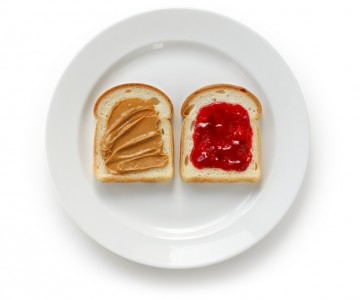Facebook and native advertising go together like peanut butter and jelly. One without the other makes for a lost opportunity at achieving excellence.
Facebook (aka the hearty peanut butter that attracts a lot of ants…errr…people) freely gives advertisers the ability to utilize precise interest targeting. Brands can target Facebook updates directly to specific niche audiences based on the interests people have shared with Facebook.
Taking advantage of precise interest targeting allows advertisers to uncover new fans, engage with a larger pool of Facebook users, connect with brand enthusiasts, and increase conversion rates. One of the biggest benefits that is still being unearthed by many advertisers is how precise interest targeting can complement brands’ native advertising push (aka the sweet, harmonious counterpart to peanut butter).
Yes, Facebook’s advertising platform has shifted. The platform now encourages brands to rely more heavily on paid engagement, instead of just organic reach. Facebook also recently altered its rules and News Feed algorithm so that a much smaller percentage of people who like a brand’s Facebook page will actually see each new post.
According to Facebook’s Brian Boland, tweaks to organic reach are a part of the social networks’s effort to maintain a strong, quality user experience ripe with relevant content. Sure Facebook is offering brands less organic reach, but it is hopefully presenting an even better opportunity for brands to reach fruitful audiences.
So what do recent Facebook changes mean for native advertising? All good things.
The advantage of native advertising is that it gives brands (aka the bread that smashes PB&J together in a nice, digestible package) the ability to build a stronger relationship with worthwhile audiences. Native ads are all about depth. Native advertising encourages brands to develop engaging content that consumers want to interact with and share. Instead of putting native ads in front of as many people as possible hoping for success, the best results from native ads often come from going deeper and building credibility with niche interest-based audiences.
Facebook provides the capability to run advertising in-feed and/or in the mobile News Feed, which is a great alignment to native advertising that appears more as sponsored content within the overall News Feed.
Many advertisers cried foul and became vocal when Facebook changed its organic reach percentages. But this is actually a positive thing for native advertising. Instead of trying to reach Facebook audiences through organic reach alone, brands are prompted to promote native ads/sponsored content and surgically pursue a specific segment of their target audience based on their known interests.
Advertisers need to think more in terms of niche audiences and develop strategies for how to reach people based on their other interests — not only their interests that are directly related to their products. Not every single person on Facebook is going to see their posts, nor do they all want to see those posts — the key is to create content that speaks more immediately to a highly focused audience, and then pay to reach that audience.
Despite what you hear from alarmists, the decline of organic reach is nothing to fear. Instead, Facebook is presenting a new challenge: The social network is requiring a much more efficient and accurate advertising experience. Now brands have to adapt their thinking and learn how to whip up a darn good sandwich.
Since I made this reference in the title, here’s your reward…


What is Social Rank?
SocialRank is a proprietary algorithm built on top of the our content platform that gives a holistic view of all social engagement (such as likes, comments, and shares) for published content across the web.